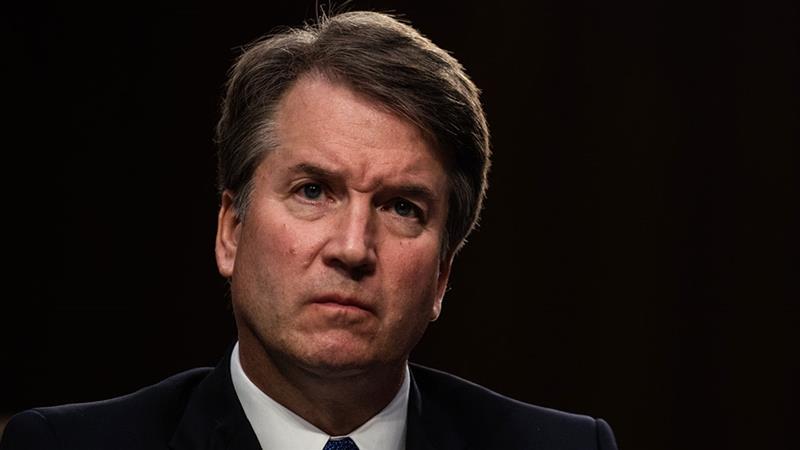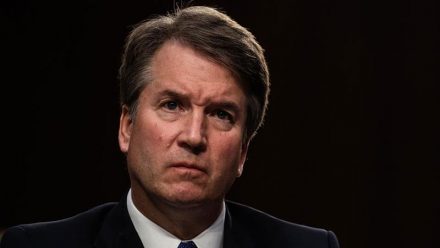Make your tax-deductible gift by December 31—every gift matched, up to $150,000!
In this moment, the future of our rights, our bodily autonomy, our freedom feels uncertain. What we do next will make a difference for decades to come.
Make your tax-deductible gift by December 31—every gift matched, up to $150,000!
In this moment, the future of our rights, our bodily autonomy, our freedom feels uncertain. What we do next will make a difference for decades to come.
Double your impact in the fight to defend and restore abortion rights and access, preserve access to affordable child care, secure equality in the workplace and in schools, and so much more. Make your matched year-end gift right now.

 Allow me to introduce Judge Brett Kavanaugh.
Allow me to introduce Judge Brett Kavanaugh.
(We haven’t had a proper introduction, not really, since the public currently has access to just four percent of the documents from his government record.)
Brett Kavanaugh worked tirelessly to help former President George W. Bush stack the federal bench with anti-abortion extremists who now hold lifetime appointments.
He clerked for Judge Alex Kozinski, who acted as his mentor. For years, it was an open secret that Kozinski sexually harassed women. Kavanaugh claims to have had no knowledge of this.
He wrote that presidents should be exempt from criminal investigation because “a President who is concerned about an ongoing criminal investigation is almost inevitably going to do a worse job as President.” It is worth noting that the president who nominated him to the Supreme Court is under investigation.
He has ruled in favor of the powerful in the vast majority of his employment cases. In Agri Processor vs. NLRB. In NLRB vs. CNN. In Island Architectural Woodwork vs. NLRB. In each of these cases, he sided with employers against unions. It is worth noting that women with union representation are typically paid $224 more per week than those without it.
He delivered the sole dissent in the 2011 case Seven-Sky vs. Holder, when his colleagues allowed a lawsuit to go forward in order to consider and uphold the constitutionality of the Affordable Care Act (ACA). The ACA has since given more than 62 million women co-pay free coverage of birth control.
His dissented in the 2015 case Priests for Life vs. Dep’t of Health and Human Services, in which his colleagues decided that employers’ religious beliefs did not give them the right to deny birth control coverage to their employees.
There is more.
Last year, a young undocumented woman (“Jane Doe”), sought an abortion while in US custody but the Trump Administration blocked her from exercising that right. When the case, Garza vs. Hargan, came before Kavanaugh, he sided with the Trump Administration to further prevent her from obtaining an abortion. When that decision was overturned, he dissented from his colleagues. He would have forced her to continue an unwanted pregnancy until she could no longer obtain an abortion. Before the Senate, her attorney described Jane Doe’s pain as “unimaginable.” She was seventeen.
Dr. Christine Blasey Ford was fifteen when she attended the party where she says Brett Kavanaugh held her down in a bedroom upstairs. He covered her mouth. She thought he was going to rape her. She thought she might die.
Deborah Ramirez was a freshman in college when Kavanaugh sexually assaulted her at a party. She remembers the moment he exposed himself to her. She remembers seeing his face. And for the decades since, she has remembered his name.
This is who Trump and Senate Republicans would like to send to the country’s highest court, where he could spend the rest of his life continuing to strip rights away from women and girls, from working people, from all of us. But what happens next isn’t theirs to decide. Not really.
Not if we fight.
So raise your voice. Show up for survivors—the ones you know, the ones you don’t, the ones you don’t know you know. Wear black and walk out at 1:00 on Monday afternoon, and share your walkout on social media with the hashtag #BelieveSurvivors.
We know who Brett Kavanaugh is. And we know that he’s not worthy to sit for a lifetime on the Supreme Court—or any court.